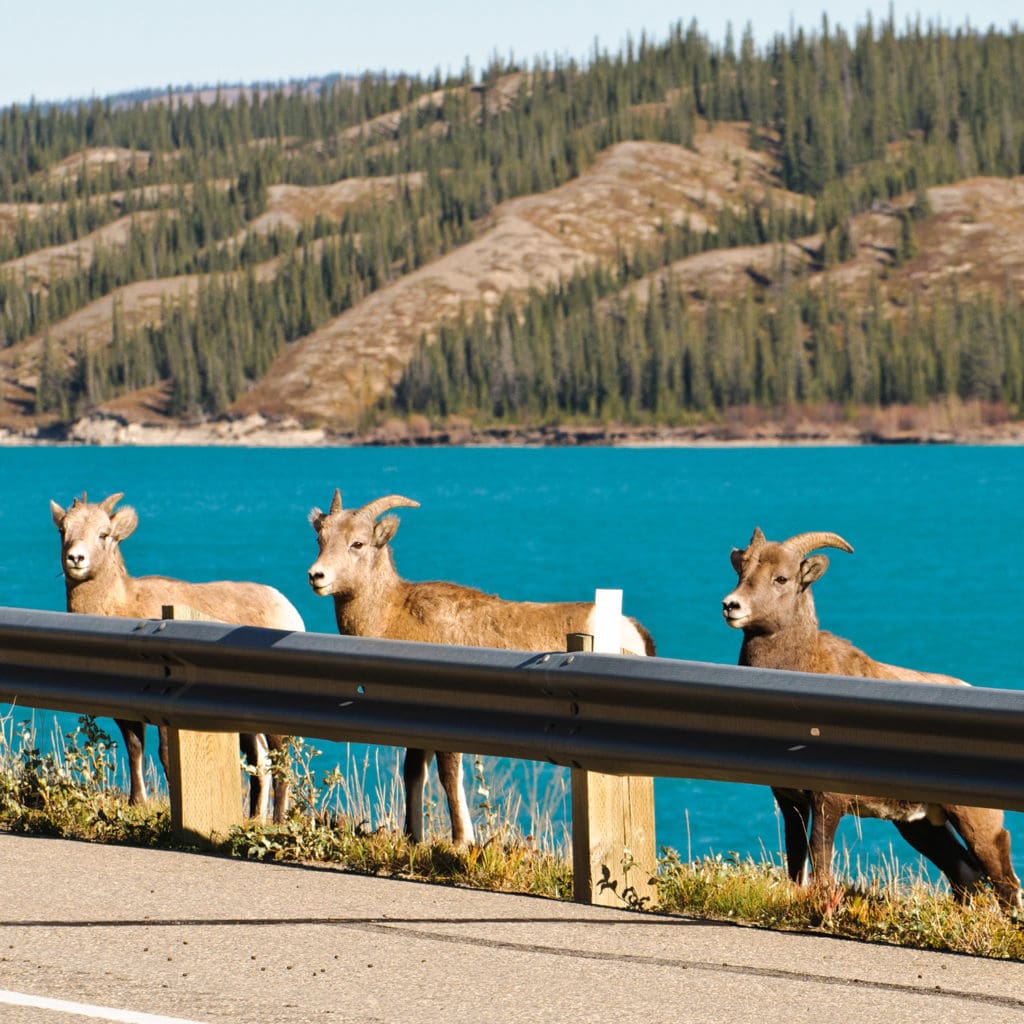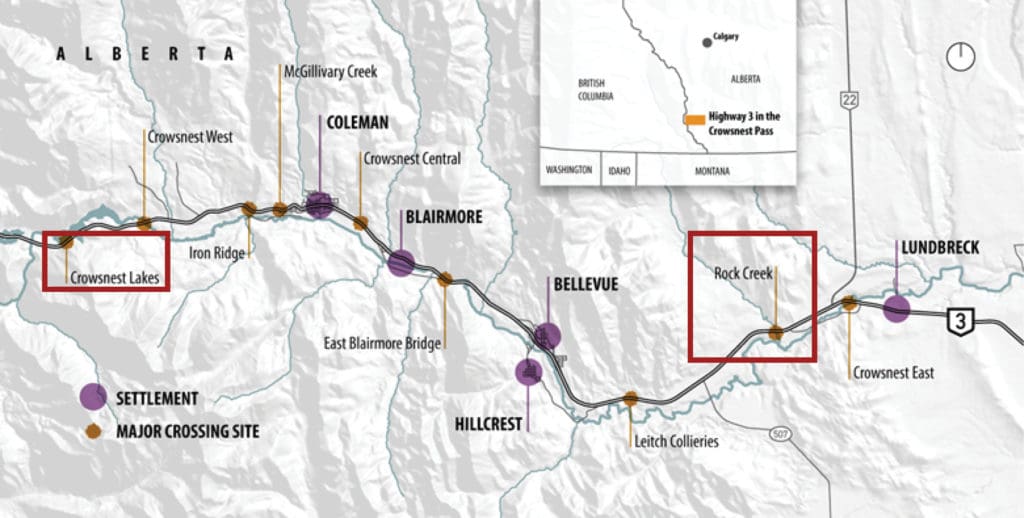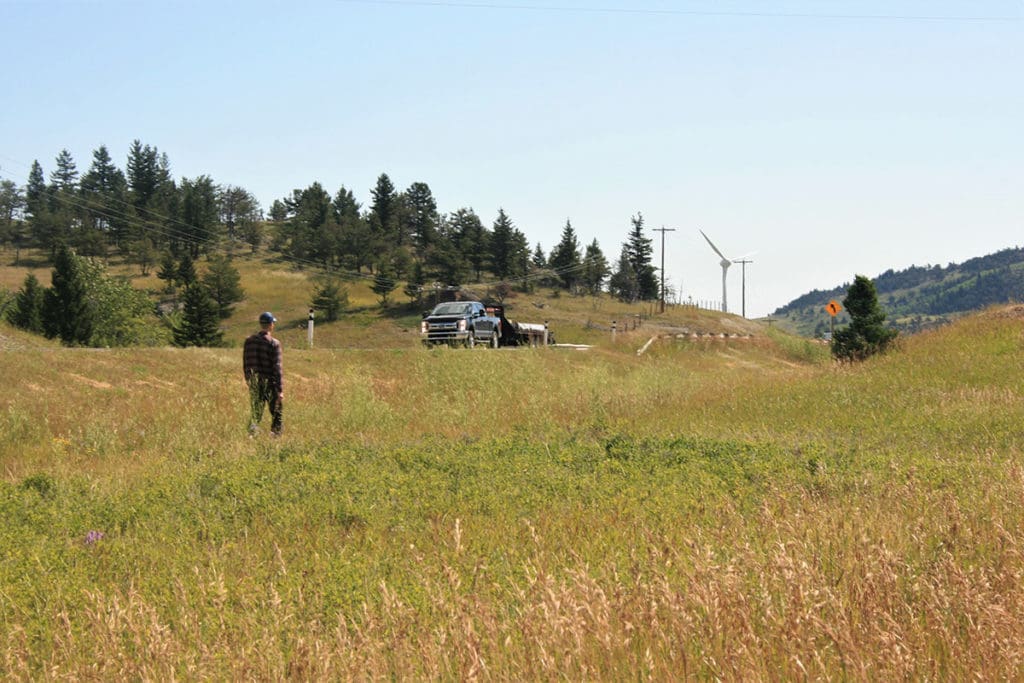Y2Y is working with its partners to promote wildlife overpasses and underpasses with fencing. These make Highway 3 safer for wildlife and people.
What is the threat?
Just north of the Canada-U.S. border, Highway 3 cuts across the Rocky Mountains through the southern portion of Alberta and B.C. This busy road is at the dividing line between Banff National Park and Glacier-Waterton International Peace Park.

Wildlife needs to cross this road to move between the two key protected areas. Nine thousand vehicles travel this artery every day, bringing an increased likelihood of wildlife-vehicle collisions. Some of the costs to society from these collisions are human fatalities and injuries, vehicle damage and higher insurance premiums.
There is also a high cost being paid by wildlife. If we don’t address the problems on Highway 3, large carnivore populations in the U.S. will become isolated from their larger populations to the north. This brings the possibility of extinction.
What is the opportunity?
There are a number of wildlife overpasses, underpasses and fences on Canada’s Trans-Canada Highway through Banff National Park. Research shows these structures significantly reduce wildlife-vehicle collisions.
Implementing these strategies could significantly reduce the barrier to connectivity that Highway 3 presents. This will also save lives and tax dollars.
People and wildlife on Alberta’s Highway 3: By the numbers
- 180: Average number of wildlife killed by vehicles each year on roads in the Crowsnest Pass region
- $1,000,000: Average cost to society of wildlife-vehicle collisions each year at Highway 3’s proposed Rock Creek underpass and fencing project
- $8,000,000: Estimated cost of a wildlife underpass and fencing at Rock Creek
- 40: Average number of wildlife-vehicle collisions each year at Highway 3’s proposed Rock Creek underpass and fencing project
- 96%: decrease in wildlife-vehicle collisions with deer and elk in Banff National Park after crossings and fencing were installed
What are we doing?
Y2Y has co-published a study that addressed the following questions about Highway 3:
- Where is wildlife successfully and unsuccessfully crossing the road?
- What measure would best support a safe crossing?
- Which is the most cost-effective approach?

Highway 3: Transportation Mitigation for Wildlife and Connectivity identified 31 strategic sites along Highway 3. Rock Creek and Crowsnest Lakes are our top two priority sites. Y2Y is working with the Alberta and B.C. governments to implement appropriate measures at both sites.
Alberta Transportation installed jump-outs and wildlife fencing at the Crowsnest Pass site.
- Jump-outs give animals caught on the highway an escape route
- Wildlife fencing funnels resident bighorn sheep through an existing underpass
In B.C., additional data is needed so crossing structures will be placed in the most beneficial places for wildlife. If you’re traveling in the area, you can use the mobile phone app Road Watch BC to help. The app can be used to record wildlife sightings and road kills.
Who are we working with?
- Miistakis Institute
- Western Transportation Institute
- Volker Stevin
- Wildsight
- Road Watch in the Pass
How can you help?
Latest news and updates
- Advocates call for action after recent deaths of 4 grizzly bears in Yoho National Park | Global Calgary, June 2024
- Reconnecting the Rockies project takes step ahead in reducing wildlife-vehicle collisions on Highway 3 | August 2022
- Animal crossing: Reconnecting North America’s most important wildlife corridor | Canadian Geographic, November/December 2021
- Reconnecting the Rockies | Fernie Fix, July 10, 2020
- Reconnecting the Rockies – Keeping People and Wildlife Connected | My East Kootenay Now, July 10, 2020
- New wildlife underpass east of Crowsnest Pass takes important step forward | CTV News, Nov. 5, 2019


